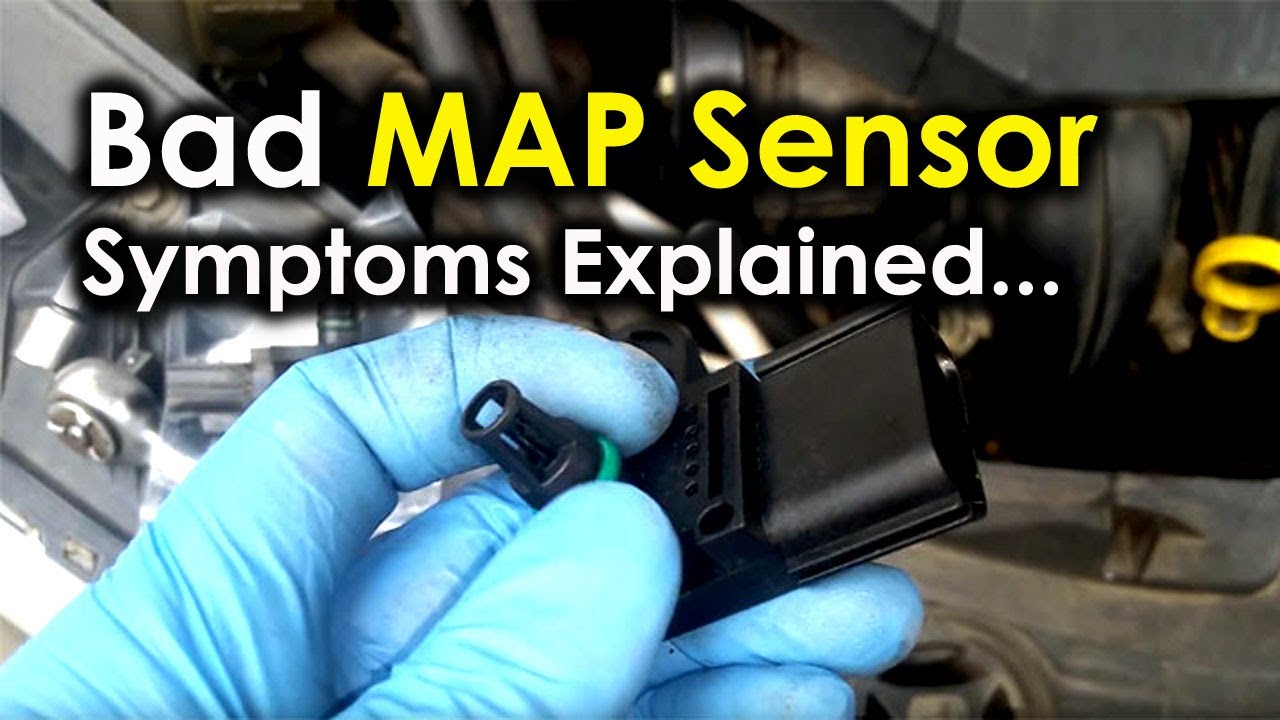What Are The Symptoms Of A Faulty Map Sensor?

If your car starts to experience any of the following symptoms, it may have a faulty map sensor. These include: decreased fuel economy, increased emissions, hesitation or stalling during acceleration, and a check engine light. If you notice any of these things happening with your vehicle, take it to a mechanic to have them check the map sensor.
A faulty map sensor can cause a number of problems with your vehicle. The most common symptom is an engine that stalls or runs rough. Other symptoms can include a check engine light, poor fuel economy, and hesitation during acceleration.
If you suspect your map sensor is failing, it’s important to have it checked out by a professional as soon as possible.
Map Sensor Trick
A map sensor trick is a way to improve the performance of your engine by increasing the amount of air that flows into the cylinders. This can be done by either removing the restrictions in the intake manifold or by installing a larger diameter throttle body. Either way, this will increase the airflow and allow your engine to breathe better.
In turn, this will make more power and improve your gas mileage.
What Happens If You Unplug a Map Sensor
If you unplug a map sensor, the engine will not be able to adjust the air/fuel mixture appropriately. This can cause the engine to run lean, which can lead to increased fuel consumption, reduced power output, and potentially damaging engine knock. In some cases, it may also trigger a check engine light.
How to Reset Map Sensor
If your car is having trouble idling, or the engine is misfiring, it might be time to reset your map sensor. The map sensor helps the engine control module (ECM) regulate air pressure and fuel mixture. Over time, the map sensor can become dirty or damaged, causing it to give inaccurate readings.
To reset your map sensor:
1. Disconnect the negative battery terminal.
2. Remove the bolts that hold the map sensor in place using a wrench or socket set.
3. Pull out the old map sensor and disconnect any wiring harnesses attached to it.
4. Install the new map sensor and reconnect any wiring harnesses. Make sure everything is tight and secure before moving on.
5.. Reconnect the negative battery terminal and start up your car..
How to Diagnose a Bad Map Sensor
A map sensor is an important part of a car’s engine management system. It measures the pressure in the intake manifold and tells the engine computer how much air is flowing into the engine. If the map sensor is not working properly, it can cause all sorts of problems with the engine, including poor performance, fuel economy, and even stalling.
If you suspect that your map sensor may be failing, there are some symptoms that you can look for:
1) The check engine light is on – This is usually the first sign that something is wrong with the map sensor. If the check engine light comes on, it means that there is a problem with one or more of the sensors in the system.
The map sensor is one of those sensors, so it’s worth having it checked out.
2) The car has trouble starting – If the map sensor isn’t working properly, it can prevent the engine from getting enough air. This can make it hard to start the car, especially if it’s been sitting for awhile.
3) The car idles rough – A failing map sensor can cause problems with idle speed and stability. If your car seems to be idling rough or fluctuating between high and low speeds, it could be a sign of a badmap sensor.
4) The car stalls – A stall can occur when there’s not enough air flowing into the engine due to a faulty map sensor.
This symptom is often accompanied by others on this list, such as difficulty starting or idling issues.
5) Poor performance – A bad map sensor will often lead to decreased performance as well.
What to Do After Replacing Map Sensor
If your check engine light is on, or you’re experiencing issues with your vehicle’s performance, it may be time to replace your map sensor. A map sensor is an essential component of the engine management system, and helps to ensure that your engine is running smoothly. Here’s what you need to know about replacing a map sensor:
1. What is a map sensor? A map sensor measures the pressure inside the intake manifold, and sends this information to the engine control unit (ECU). This helps the ECU to adjust the air/fuel mixture according to driving conditions, ensuring optimal performance.
2. Why might I need to replace my map sensor? If your check engine light is illuminated, it’s likely that there’s an issue with the map sensor. In some cases, you may also experience poor fuel economy or reduced performance if themap sensor isn’t working properly.
3. How do I know if my map sensor needs replacing? The best way to tell if your map sensor needs replacing is to have it diagnosed by a professional mechanic. They’ll be able to hook up a diagnostic tool and read any fault codes that are stored in the ECU – which will usually point them in the right direction!
4. Can I replace my own map sensor? Replacing a map sensor isn’t too difficult for those with some basic mechanical knowledge – but we still recommend leaving it to the professionals unless you’re confident in your abilities!

Credit: mechanicbase.com
How Do I Test My Map Sensor?
One of the most common ways to test a MAP sensor is with a vacuum gauge. To do this, you’ll need to connect the gauge to the intake manifold using a T-fitting. Then, start the engine and let it idle.
The reading on the vacuum gauge will tell you if the MAP sensor is working properly.
Another way to test a MAP sensor is with a multimeter. To do this, you’ll need to disconnect the electrical connector from the MAP sensor.
Then, set your multimeter to read resistance (ohms) and touch the leads to the two terminals on theMAP sensor. The reading should be between 1 and 5 ohms if the sensor is working properly.
What Happens If You Unplug Map Sensor?
If you unplug the MAP sensor, the engine will not be able to adjust the air/fuel mixture and could run too lean or too rich. This could cause damage to the engine over time.
What Does a Bad Map Sensor Sound Like?
A bad MAP sensor can sound like a lot of things, depending on the specific problem. If the problem is with the MAP sensor itself, it might produce a hissing noise or a loud clicking noise. If the problem is with the vacuum hose that connects to the MAP sensor, it might produce a whistling noise.
If the problem is with the electrical connection to the MAP sensor, it might produce a faint buzzing noise.
What Happens If You Drive With a Bad Map Sensor?
If you have a bad MAP sensor, it can cause your car to run lean or rich. A lean condition means there is not enough fuel being injected into the cylinders, while a rich condition means there is too much fuel being injected. Either way, this will lead to decreased performance and fuel economy.
In extreme cases, it can even cause engine damage.
Bad MAP Sensor – Symptoms Explained | Signs of failing MAP (Manifold Absolute Pressure Sensor)
Conclusion
The symptoms of a faulty map sensor can vary depending on the severity of the problem. However, some common symptoms include:
– Reduced fuel economy
– Poor engine performance
– Hesitation or stalling during acceleration


